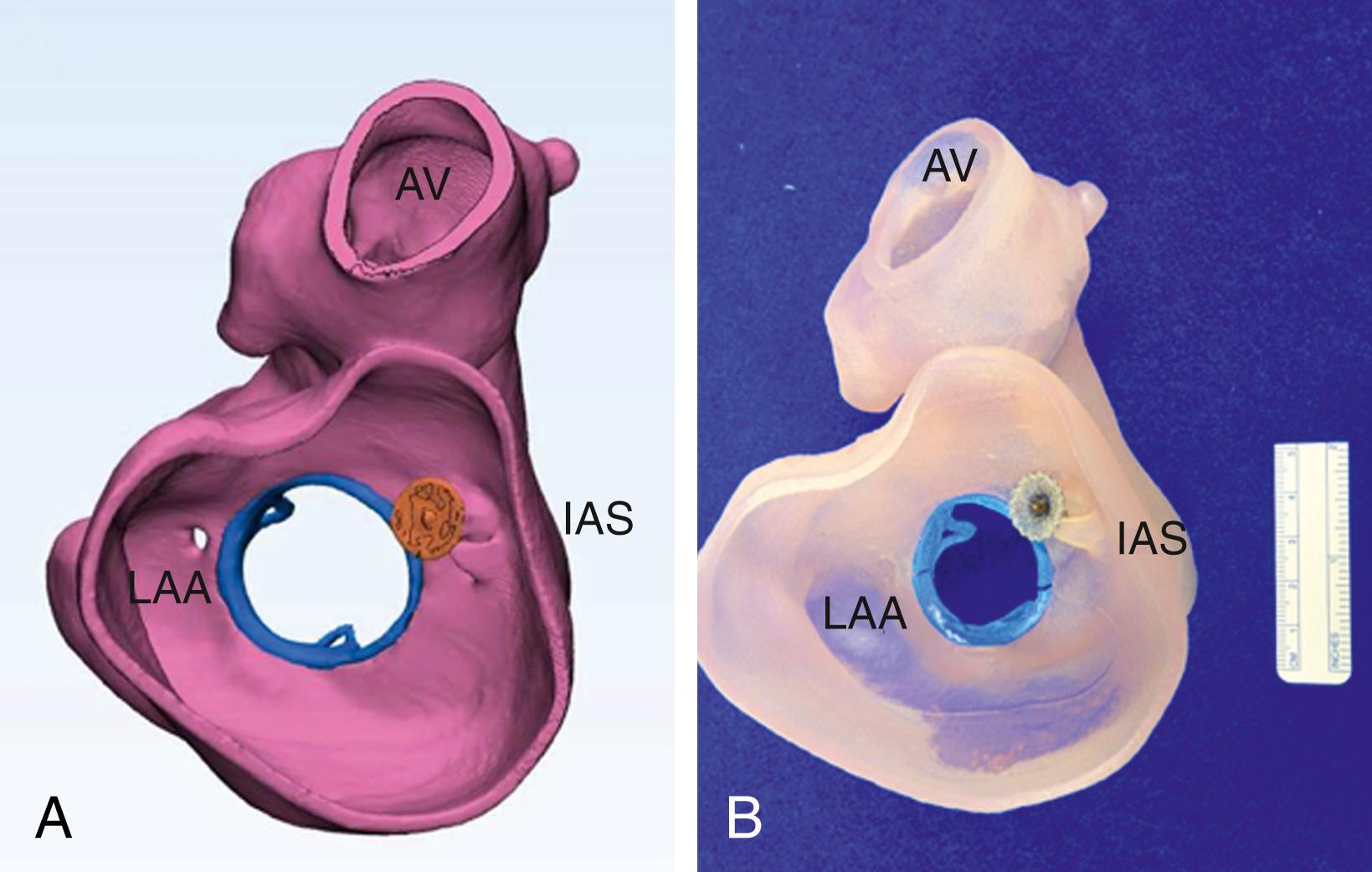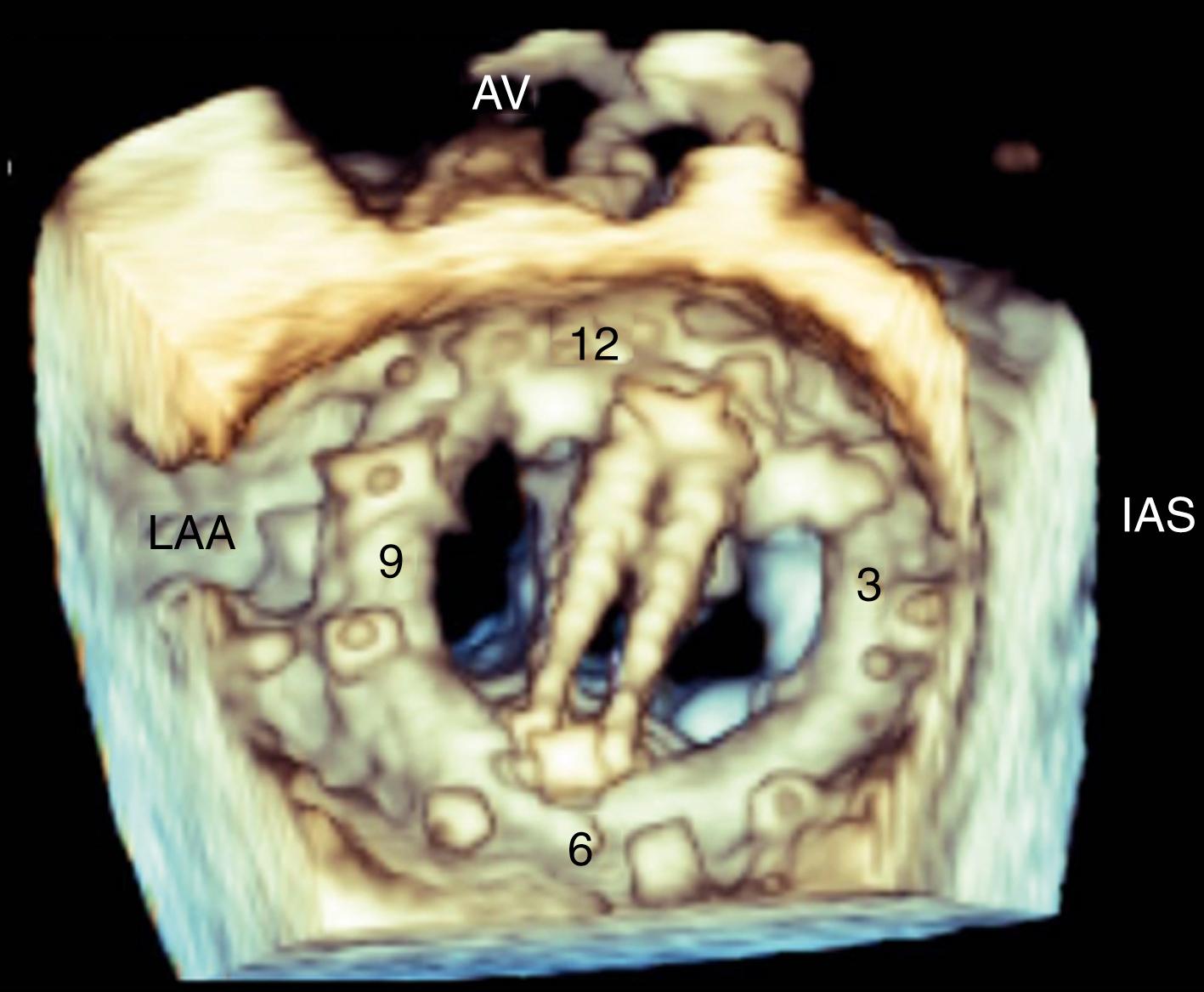Physical Address
304 North Cardinal St.
Dorchester Center, MA 02124
Paravalvular regurgitation (PVR) is a serious and underdiagnosed problem of prosthetic valves. It occurs in 7% to 17% of surgical mitral prosthetic valves and 2% to 10% of aortic prosthetic valves. Approximately 74% of PVR occur in the first year after implantation. Anatomic risk factors for development of PVR include history of endocarditis, significant mitral annular calcification, corticosteroid use, and presence of mechanical prosthetic valves. Although the vast majority of cases of PVR are asymptomatic, up to 5% of the cases are complicated by heart failure, hemolytic anemia, or infective endocarditis. , , Per the American College of Cardiology/American Heart Association guidelines, percutaneous PVR closure is indicated in patients with symptomatic heart failure (New York Heart Association functional class III to IV) or persistent hemolytic anemia who have anatomic features that are suitable for percutaneous repair at a center of expertise. Studies have demonstrated successful use of transcatheter-based repair techniques in high-risk surgical patients, with 90% success in defect closure and improved patients’ outcome. , Periprocedural imaging is invaluable in determining suitability for percutaneous closure in addition to planning and guiding the intervention. Echocardiography plays a pivotal role in diagnosing PVR, assessing candidacy and guiding transcatheter closure, and identifying immediate postprocedural complications in addition to postprocedural follow-up.
The PVR closure procedure is a technically challenging procedure. The ideal closure device is one that conforms to the tortuous course of the defect, achieves complete occlusion of the defect, is easily deliverable, and has a low risk of embolization. Periprocedural imaging aids in device selection by determining the size, extent, and course of the defect. Commonly used closure devices include the Amplatzer vascular plug II, Amplatzer Atrial Septal Defect Occluder, Amplatzer Ventricular Septal Defect Occluder, and Patent Ductus Arteriosus Occluder.
Echocardiography is the primary imaging modality for diagnosis and quantitation of PVR. A detailed discussion of the echocardiographic evaluation of prosthetic valve function and PVR is provided elsewhere in this book.
Electrocardiographically gated multidetector computed tomography (MDCT) is a key imaging modality for the anatomic characterization of the paravalvular defect for procedural planning. It enables localization and sizing of the defect. This is important because undersizing of the defect and hence the occluder devices used can lead to complications such as device embolization or migration and PVR.
With increasing complexity of transcatheter structural interventions, use of three-dimensional (3D) printing to simulate patient-specific valve geometry may provide useful data in the preprocedural planning phase. This rapidly evolving technology entails the integration volumetric transesophageal echocardiography (TEE) images or MDCT data to a create patient-specific 3D printed model of prosthetic valve, which in turn enables accurate device selection and prediction of potential complications resulting from the interaction between the valve and the implanted device ( Fig. 172.1 ).

A comprehensive TEE examination at the start of the procedure is essential to confirm the findings of the preprocedural imaging studies and rule out the presence of infective endocarditis, significant valve instability (dehiscence involving more than one-fourth to one-third of the valve ring), or intracardiac thrombi, all of which represent contraindications to the procedure.
Because of its higher spatial resolution, TEE (with two-dimensional [2D] and 3D imaging) is superior in anatomic assessment and localization of PVR compared with TTE. PVR can be single or multiple and can assume different shapes; they can be crescentic, oblong, and fenestrated and can form serpiginous tracts. Therefore, detailed imaging of the valve in multiple planes in addition to the use of 3D imaging is key in unmasking the full extent of the defect.
A standard clock-face view provided by an en face TEE view of the mitral valve is used when describing the location of PVR. In this view, the aortic valve is located anteriorly, the interatrial septum is located medially, and the left atrial appendage is located laterally ( Fig. 172.2 ). The PVR is described in relation to these anatomic landmarks.

Determining the degree of PVR is more challenging compared with native valve regurgitation. The area of proximal flow coverage is often shadowed by the prosthesis and difficult to measure. The use of the proximal isovelocity surface area radius (PISA) method, therefore, has not been validated in prosthetic valves. If a large area of flow converge is visualized, however, severe regurgitation should be suspected. Most PVR jets are eccentric, and this leads to underestimation of their severity based on measurement of the jet area due to the Coanda effect. Other parameters, including jet width (vena contracta), jet area, and density, can be used. , An additional specific sign for the presence of severe mitral regurgitation is the presence of systolic flow reversal in the pulmonary venous flow.
The American Society of Echocardiography (ASE) guidelines on evaluation of prosthetic valves recommend estimating the proportion of the regurgitant area to the circumference of the prosthetic ring, in which PVR is defined as mild if it occupies less than 10% of the prosthesis and severe if it occupies more than 20%. In case of multiple defects, there is no well-established method to quantify severity of PVR. In such cases, the guidelines recommend determining the proportion of the regurgitation area to the prosthesis circumference. Continuous-wave Doppler interrogation across the mitral valve is used to assess transmitral gradients. If the pressure gradient is elevated in the absence of imaging features of prosthetic valve obstruction, then significant PVR contributing to a high-flow diastolic state should be a consideration.
Become a Clinical Tree membership for Full access and enjoy Unlimited articles
If you are a member. Log in here